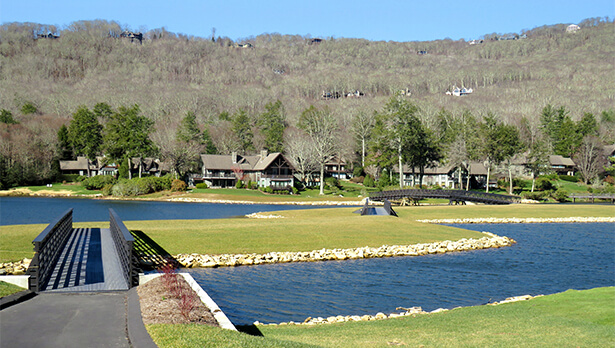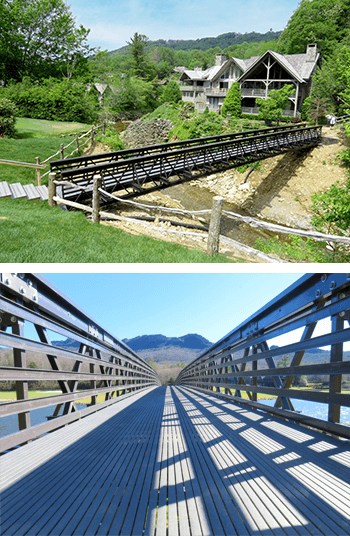Case Study: Golf Community Pedestrian Bridges


Located in the Blue Ridge Mountains of North Carolina, a private golf course community looked to replace five pedestrian bridges. The timber bridges interconnected multiple isles to form a long network of walkable area for pedestrians over a large lake. The main cause for replacement of the original bridges was due to the ongoing and labor-intensive process of painting and staining the structures.
During the design and material selection stage of the project, the owners of the community prioritized a long-term solution to ensure decades of maintenance-free operations on each of the five connecting bridges. With this in mind, they worked with the designers at Areté Engineers to balance the community design specifications and functional needs of the property.
In the spring of 2020, each positive camber bridge was connected with each isle within a tight construction timeline. Each of the bridges measured between 5' to 6' 5" in width and spanned either 80' or 180' in length.
| TECHNICAL DATA |
|---|
| Product: Golf Community Pedestrian Bridges |
| Process: Pultrusion, Fabrication |
Materials & Sizes:
|
| For: Areté Structures |
| User: a Private North Carolina Golf Community |
The bridges’ structural parts (EXTREN® Series 525) were pultruded in the custom color of rustic brown. This was done to best resemble the color of timber and to blend with the natural forest surroundings. The durable flooring choice on each of the five bridges was DURAGRID® T-1800 pultruded FRP grating. This type of durable, non-skid, pultruded grating will stand up to decades of daily foot traffic.
On fabrication and preassembly, Areté Structures was able to complete all of the necessary work at their facility in Boone, NC. The final installation process was handled by a third-party contractor at the residential community.
In addition to their positive feedback about the bridges themselves, the owners were also equally impressed with how a project of this magnitude required minimal activity and disruption to the community and will last many years into the future.